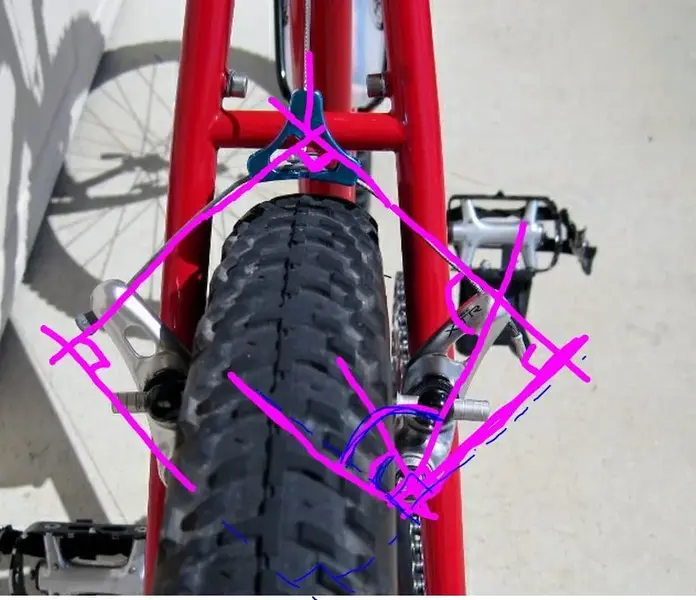We_are_Stevo
Old School Grand Master
- Feedback
- View
 Why would I make this sh*t up?
Why would I make this sh*t up?Gospel according to SB...
Types of Cantilevers
Conventional cantilevers fall into three types, defined by their cantilever angle:
Wide-profile cantilevers have a cantilever angle much greater than 90 degrees. The best example of this type is the old Mafac cantilevers, in which the anchor arm actually sloped downward from the boss in some installations. This design is now pretty much obsolete. Wide-profile cantilevers have rather low mechanical advantage, and work well only with levers with a high mechanical advantage.
Medium-profile cantilevers have a cantilever angle of around 90 degrees. Most late-1980's cantilevers belong to this family. Medium-profile cantilevers are very forgiving and give excellent all-around performance with a wide range of set-ups.
Low-profile cantilevers have a cantilever angle of less than 90 degrees. The principal advantage of narrow profile cantilevers is that they don't stick out so far from the frame or fork, very desirable, because protruding cantilever arms can cause a multitude of problems, particularly in the rear, where a rider's feet may hit them. Narrow-profile cantilevers are also capable of excellent performance, but only if properly set up. A carelessly set-up low-profile cantilever may have very low braking power, even though it feels great on the workstand.
..BiTD I had a set of plastic Shimano workshop profiles for doing just that...
